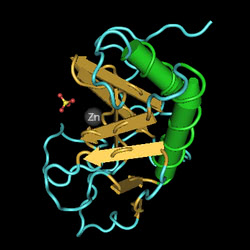In 2005, New York-based scientist and geneticist Pier Paolo Pandolfi named a cancer-causing protein which he discovered, ‘Pokemon’.
The name, which stood for POK erythroid myeloid ontogenic factor, naturally caught the attention on Nintendo after the discovery of the gene was first published in the January 2005 issue of British science journal Nature.
Pandolfi, who was working for the Memorial Sloan-Kettering Cancer Center (MSKCC) at the time, was subsequently threatened with a lawsuit. The suit came from none other than Pokemon’s publisher Nintendo because (you guessed it), they didn’t want to have the gaming franchise associated with cancer.
Perhaps it was headlines like “Pokemon causes cancer” that did it.
The cancer-causing protein is now called Zbtb7 – just rolls off the tongue doesn’t it?
It’s wasn’t the first time our big-brained overlords have confessed their love for gaming in most spectacular display of geekdom ever. There is also a protein named Pikachurin inspired by Pikachu’s “lightning-fast moves and shocking electric effects”.
Not all gaming companies are as cautious and quick to defend their reputations as Nintendo. Some of you might recall the “sonic hedgehog” gene. On the surface it’s a harmless tip of the hat: the “sonic hedgehog” gene, named in 1993, is a protein that in humans is encoded by the SHH. It plays a key role in regulating vertebrate organogenesis, AKA formation of the neural system.

However, the gene has been linked to a condition known as holoprosencephaly, which can result in severe brain, skull and facial defects. Because of this, the decision by Harvard researcher Cliff Tabin to call it the “sonic hedgehog” gene has come against much criticism as serious discussions with family might not be well-received.
Unlike Nintendo, Sega never did sue.


































